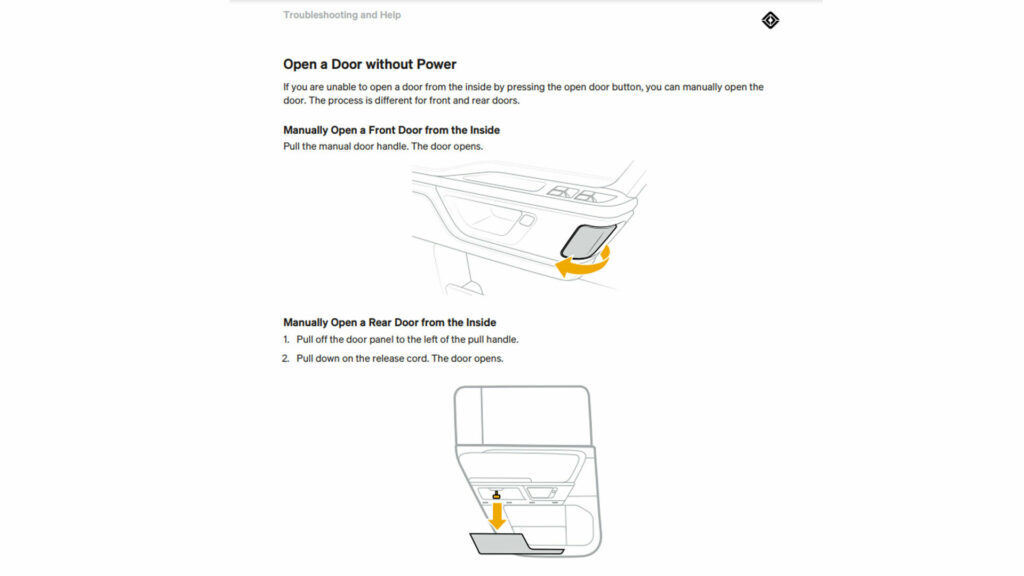- Electronic door latches are now more common than ever in modern vehicles.
- In case of emergency, it can often be frustratingly hard to find the manual release.
- Intuitive manual releases, like those by Audi and Lexus, prove simple solutions do exist.
Some cars today have no turn signal stalks—none. Others have hidden manual door releases that require the patience of a bomb disposal technician. And if you think that’s hyperbole, ask anyone who’s tried to escape the back seat of a Tesla in a pinch. Story after story highlights the safety concerns these confusing designs pose for drivers and passengers alike. So, here’s the big question: Should the government step in to end this madness?
A Lesson in Reading the Manual or Playing Escape Room
One side of the argument is that people should have knowledge and understanding about the car they’re in. That includes understanding how the doors open and what to do if electronic door latches fail. Fair point, right? Sure, in theory. But in reality, automakers often seem to be in a competition to make the least intuitive design choices possible.
Currently, there’s no legislation forcing them to consider things like “basic usability in emergencies.” And who suffers? Drivers, renters, and anyone unfortunate enough to get trapped in a car designed to prioritize style over survival.
Take Tesla, for example. People who rent or borrow these cars frequently complain that they have no idea how to exit when the electronic systems go kaput. It’s not just an inconvenience; it’s a potential hazard.
Read: A Rivian R1S Started Smoking As Driver Was ‘Trapped’ Inside, Couldn’t Open Doors
One Redditor summed it up nicely, describing the acrobatics required to open the rear doors of a Tesla during an emergency: “Try explaining an emergency release mechanism to a 70-year-old parent and show the whole thing about pulling out water bottles on the side pockets, lifting the rubber flap, unlocking the hatch and somehow fumble through the short metal wire and having a good angle to grab it and pull.”

They’re speaking specifically about the way one gets out of the rear seat of a Tesla in the event that the electric door popper doesn’t work. While they don’t mention them, young children would likely struggle with that task too. None of this is to say that Tesla is the only one with complicated manual releases, or that electronic door latches need to die. A few brands have a very elegant solution to this problem.
Elegance Exists—In the Hands of Some Legacy Brands
Some automakers do manage to get it right. Audi, Lexus, and a few other others incorporate the manual emergency release into the interior door handle itself. So under normal conditions, half a pull on the lever will open the door. Should one need to use the manual release, they just need to pull the same handle slightly harder (or further through its full sweep). It’s a simple and intuitive thing that shouldn’t confuse anyone.

So, Should Uncle Sam Get Involved?
With all of this in mind, we’ll pass the question off to you. Should the government or one of its agencies like NHTSA get involved here? Should they require that automakers use a consistent manual door release, and maybe do something similar with turn signals (which in some cars are buttons on the steering wheel instead of stalks) or other safety equipment?
Let us know what you think in the comments. Is it time for some federal intervention, or should manufacturers be left to design their way into (and out of) these headaches?





